In 2025, millions of pets will cross international borders with their families. Yet pet owners still report feeling overwhelmed by the process before they even begin.
I completely get it. International pet transport is complicated because you must deal with:
- Import regulations
- Health checks
- Vaccinations
- Quarantine
- And more
A stress-free journey comes down to preparation – the right preparation. I’m going to guide you through what you need to know about transporting your pet overseas.
Are you ready to turn what seems like an impossible task into a manageable project? Your stress-free international pet transport journey starts here.
Essential Documents for International Pet Travel
International pet transport requires proper documentation to ensure your pet’s health and safety. The documentation required for a pet import permit application typically includes:
- Proof of Identification – A clear photo or scan of your pet showing its features and any unique identifiers.
- Veterinary Health Certificate – Issued by a licensed veterinarian, confirming that your pet is free of infectious diseases and fit to travel.
- Vaccination Records – Documentation showing all vaccinations, including rabies, are up to date.
- Rabies Titre Test Results – If applicable, from a government-approved laboratory.
Microchip Certification – Proof that your pet has been microchipped with an ISO-compliant chip.
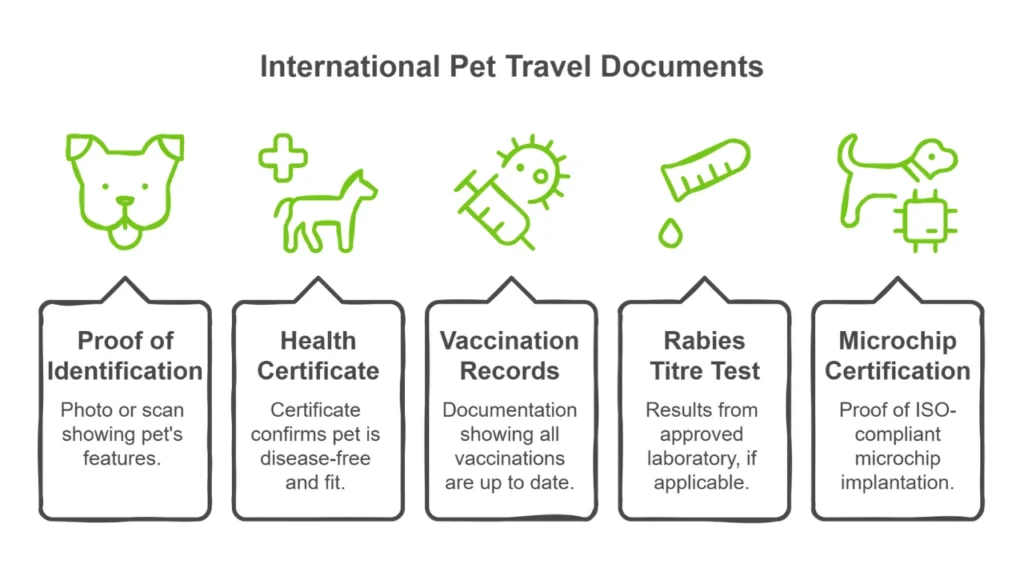
International Pet Transport Health Certificate
A cornerstone document for international pet travel is the health certificate, which must be issued by a certified veterinarian.
These certificates confirm your pet’s fitness for travel and compliance with destination requirements. Health certificates are often called “fit to fly” certificates.
The fit to fly certificate verifies that your pet is in good health and has all the vaccinations it requires to enter the destination country. The certificate will usually include your pet’s name, age, microchip number and vaccination records for airlines and authorities to have on file.
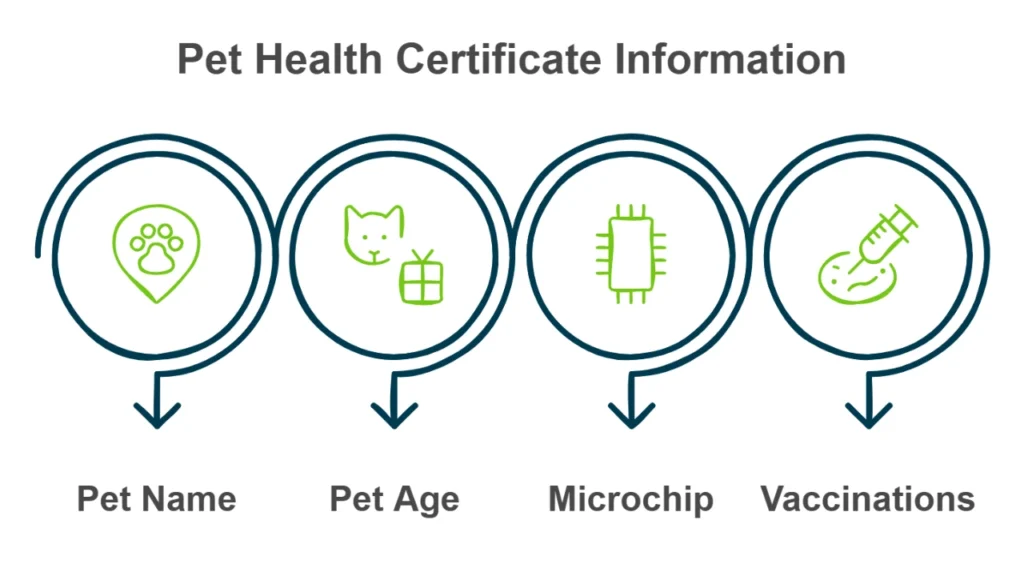
Any parasite treatments will also be included in the pet transport health certificate. Required treatments vary depending on the destination country.
Before bringing your pet to Australia, internal and external parasite treatment is a mandatory requirement.
Internal Parasite Treatment
Dogs and cats must be treated for internal parasites (nematodes and cestodes) twice. These treatments must be administered at least 14 days apart.
An approved vet should treat your pet within 45 days before the date of export. The second treatment must be given within 5 days of travel.
External Parasite Treatment
Treatments for ticks and fleas must be administered at least 30 days before travel for dogs. An approved vet must then treat your dog for ticks and fleas continuously until the date of travel.
Note: Not all brands are accepted forms of treatment, so it’s worth speaking to a pet transport company before going ahead to save time and money.
If your dog has visited mainland Africa, you must get it treated for Babesia canis. An approved vet must administer this treatment within 28 days of travel to Australia.
The protocol for fleas and ticks is similar for cats, with treatment at least 21 days before departure. Your cat should be examined for external parasites during subsequent vet visits, with ongoing treatment until export.
An approved vet must document and verify these treatments for your pet import permit. You need proof of treatment before bringing pets into Australia.
Vaccinations for International Pet Travel
Vaccination records are a non-negotiable requirement for international pet shipping. Rabies vaccination is generally required for dogs and cats travelling internationally, depending on the departure and destination countries, but the timing requirements vary by country.
Required vaccinations to enter Australia are:
- From most countries, the rabies vaccine is required to enter Australia.
- The leptospirosis vaccine for dogs is required if your dog hasn’t been tested.
- If entering Australia from an affected country, the canine influenza vaccine is required.
Recommended vaccinations for dogs (C5 vaccination) are:
- Distemper
- Hepatitis
- Parvovirus
- Para-influenza
- Bordetella bronchiseptica (kennel cough)
Recommended vaccinations for cats (F3 vaccination) are:
- Feline enteritis (panleukopenia or feline parvovirus)
- Feline calicivirus
- Feline herpesvirus (feline viral rhinotracheitis)
The schedule for immunisatons like the rabies vaccine depends on the destination country. For instance, pet travel to the European Union (EU) requires a 21-day wait period between the rabies vaccination and the day of export.
Rabies Titre Test and Global Pet Transport
Countries including Australia, New Zealand and Japan require your pet to undergo the rabies titre test before departure – exact timeframes differ between countries.
Generally, your pet must undergo the rabies titre test around 30 days after the rabies vaccination. This gives enough time for developing an immune response.
For the rabies titre test analysis, you must use accredited laboratories recognised by the destination country’s authorities. This ensures adherence to stringent testing protocols and quality assurance standards, protecting the accuracy and reliability of test results.
Tests that don’t follow Australian protocols will be rejected by authorities. This directly impacts your pet’s eligibility for entry into the country.
The rabies titre test process is as follows:
- Microchipping: Get your pet microchipped before they’re vaccinated against rabies.
- Rabies Vaccination: Ensure an approved vet administers the rabies vaccination.
- Waiting Period: Generally, wait around 30 days after the vaccination before getting the rabies titre test – timeframe may vary depending on the destination country.
- Blood Sample Collection: Your pet’s blood sample can be collected by an approved vet and sent to an accredited lab for analysis after the waiting period.
Laboratory Testing: The lab tests the blood sample, providing a report indicating the rabies antibody level, which must meet the minimum requirements specified by the destination country.
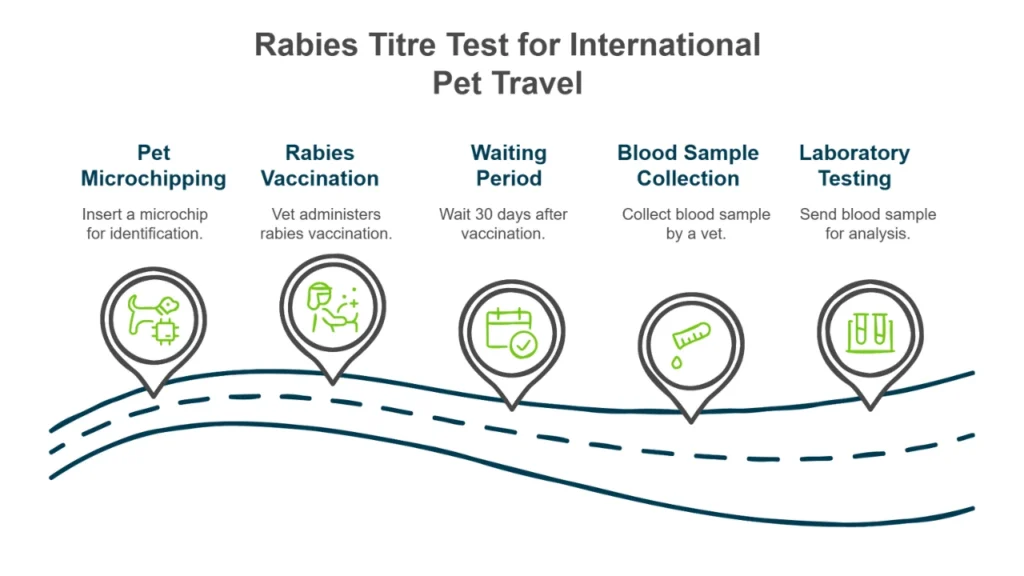
To prove your pet has adequate immunity against rabies, most countries require a 0.5 IU/ml level or higher. In the event your pet fails the blood test, they need a booster vaccination and a second test 14-28 days later.
As mentioned, regulations for international pet travel may vary between countries. Checking these for the minimum period between vaccination and blood sampling for the destination country is essential.
Dogtainers can advise you on rabies titre test regulations and help you with documentation.
Microchipping for International Pet Shipping
Microchipping has become standard practice for international pet travel. The microchip must be implanted before rabies vaccinations for many countries.
This sequencing is critical because vaccinations administered before microchipping are often considered invalid by border authorities.
Pet microchipping involves implanting a small electronic chip under your pet’s skin, typically between the shoulder blades. The process is quick and causes minimal discomfort to your pet – similar to getting a vaccination.
For your pet to enter Australia, the microchip must meet the following standards:
- International Standards Organisation (ISO) specifications
- Operate at a 134.2 kHz frequency
- Easily read by an ISO-compatible reader
- Microchip number should be 10 or 15 digits
- Microchip numbers starting with 999 are unacceptable
- AVID microchips with 9-digit numbers are unacceptable
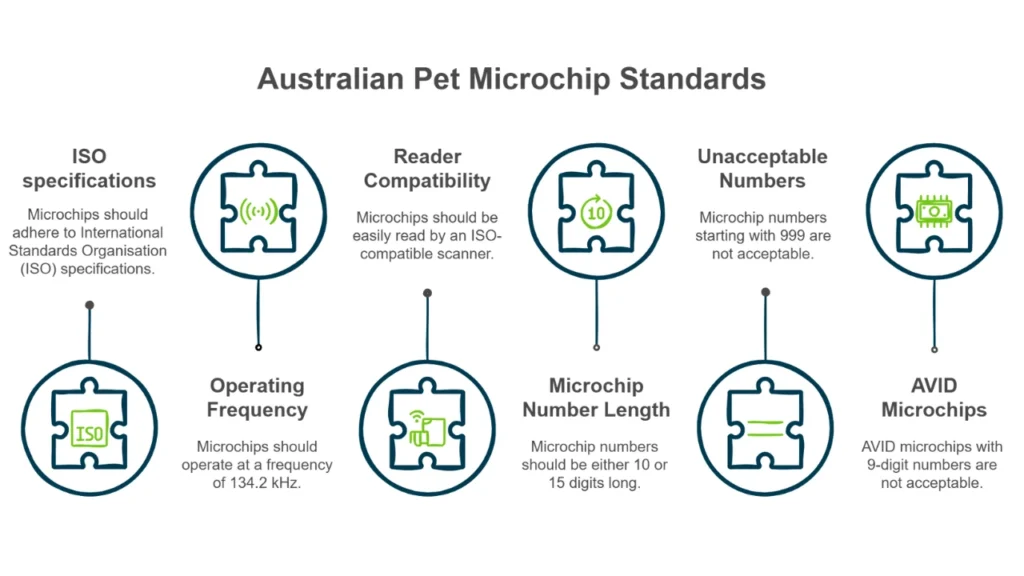
The microchip serves as your pet’s permanent identification, linking them to their documentation throughout the journey. In cases of lost paperwork or questions about identity, the microchip provides definitive proof.
Your pet microchip is also a priceless insurance policy for lost pets. They are highly effective for reuniting lost pets with their owners, as your contact information is also linked to the chip.
Vets or animal shelters can scan the chip, see your contact details and get in touch. We answer your questions more thoroughly about pet microchipping in Australia.
Navigating Quarantine for Pet Import
Pet quarantine is a mandatory isolation period for animals entering certain countries. It helps prevent the spread of diseases like rabies, avian influenza, and other zoonotic conditions across borders.
The process protects both local animal populations and humans from potential health threats. Pet quarantine regulations vary depending on the departure and destination countries.
For instance, Australia and New Zealand have some of the strictest pet travel quarantine regulations in the world. They’re rabies-free countries, so these regulations are designed to protect local animals and people.
Australian Pet Quarantine
The quarantine period for pets entering Australia depends on the departure country. Authorities have categorised countries into four groups:
- Group 1 countries
- Group 2 countries
- Group 3 countries
- Group 4 countries
| Group | Countries/Regions |
| Group I | New Zealand, Norfolk Island, Cocos Island |
| Group II | American Samoa, Bahrain, Barbados, Christmas Island, Cook Island, Falkland Islands, Micronesia, Fiji, French Polynesia, Guam, Hawaii, Iceland, Japan, Kiribati, Mauritius, Nauru, New Caledonia, Niue, Palau, Papua New Guinea, Samoa, Singapore, Solomon Islands, Tonga, Tuvalu, Vanuatu, Wallis and Futuna |
| Group III | Antigua & Barbuda, Argentina, Austria, Bahamas, Belgium, Bermuda, British Virgin Islands, Brunei, Bulgaria, Canada, Canary and Balearic Islands, Cayman Islands, Chile, the Republic of Croatia, the Republic of Cyprus, Czech Republic, Denmark, Finland, France, Germany, Gibraltar, Greece, Greenland, Guernsey, Hong Kong, Hungary, Ireland, Isle of Man, Israel, Italy, Jamaica, Jersey, Kuwait, Latvia, Lithuania, Luxembourg, Macau, Malta, Malaysia (Peninsular, Sabah and Sarawak only), Monaco, Montenegro, the Netherlands, Netherlands—Antilles & Aruba, Norway, Poland, Portugal, Puerto Rico, Qatar, the Republic of South Africa, Reunion, Saipan, Serbia, Seychelles, Slovakia, Slovenia, South Korea, Spain, St Kitts and Nevis, St Lucia, St Vincent & the Grenadines, Sweden, Switzerland (including Liechtenstein), Taiwan, Trinidad and Tobago, the United Arab Emirates, the United Kingdom, the United States (including the district of Columbia, Northern Mariana Islands, Puerto Rico and the US Virgin Islands (but excluding Guam and Hawaii), Uruguay |
| Group IV | These are non-approved countries, with all of the countries not listed above falling into this final group. |
Generally, all pets arriving from overseas must undergo quarantine. The few exceptions are pets coming directly from New Zealand, Norfolk Island, and Cocos (Keeling) Island.
Pets travelling from a non-approved country must first be transported to an approved country. Before travelling to Australia, your pet must spend a set amount of time in the approved country.
The Australian Department of Agriculture, Fisheries and Forestry (DAFF) sets the quarantine rules. These include:
- A mandatory health examination upon arrival
- Verification of documentation
- A quarantine period at the Mickleham facility in Melbourne
For pets entering Australia, the quarantine period ranges from 10 to 30 days – provided they meet all pre-entry conditions. The exact quarantine duration can vary based on factors such as the country of origin and the preparation completed before departure.
Want to know more? We answer your Australian pet quarantine questions.
Pet Crates for International Transport
Your pet must travel in an airline-approved pet crate when flying internationally. Airlines won’t accept any old pet carriers for international travel and follow strict guidelines set by the International Air Transport Association (IATA) for pet crates.
If you use a non-compliant crate, airline staff will stop your pet from boarding the plane. So, choosing the right pet travel crate is vital.
An airline-approved crate must be:
- Made of strong, rigid plastic or wood (soft-sided carriers are not allowed for cargo travel)
- Large enough for your pet to stand, turn around, sit and lie down comfortably
- Secure, with non-slip fasteners and a locking door
- Well-ventilated on all four sides
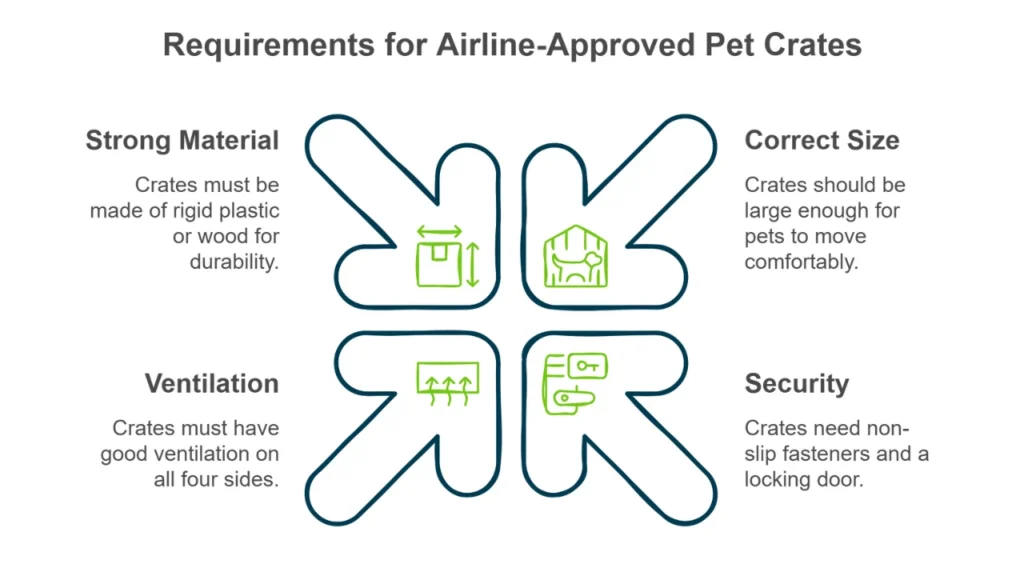
The size of the crate is also crucial for your pet’s safety and comfort. Your pet won’t have proper ventilation if the crate is too small but will move around too much if the crate is too big.
We can help you choose the perfect crate for your pet, ensuring they comply with regulations and board the plane.
2025 Regulatory Updates Affecting International Pet Travel
The pet travel landscape has seen significant changes in 2025. The most notable development is the implementation of new U.S. tariffs on foreign pets travelling as cargo.
As of April 18, 2025, the U.S. government has begun applying tariff codes under the Harmonized Tariff Schedule to live animal imports shipped via cargo. This includes dogs, cats, birds, and other species arriving:
- Without a U.S. owner present
- Travelling as manifest cargo
This does NOT apply to pets travelling as carry-on or excess baggage.
The tariffs apply if the following conditions are met:
- The pet is traveling from a foreign country into the United States
- The animal is shipped as cargo (not in-cabin with a passenger)
- The pet does not already hold U.S. ownership or residency status
- The country of origin is one currently affected by new trade tariff policies
Expect customs to evaluate your pet under new tariff rules if it is flying as cargo from a non-U.S. address and entering alone.
International pet transport regulations are constantly evolving – they’re never just “set and forget.” At Dogtainers, our experts are always staying updated on regulatory developments and gaining new knowledge in the industry.
If you’re transporting your pet to the U.S., we can help guide you through the process, including the new United States tariffs.
See Bring Your Pet to the USA from Australia: Your Essential Guide for detailed information.
You will also find helpful information for popular international pet transport destinations from Australia:
- Bring Your Pet to the UK from Australia: A Comprehensive Guide
- Bring Your Pet to New Zealand from Australia (What You Need to Know)
- Bring Your Pet to Canada from Australia (What You Need to Know)
International Pet Transport with Dogtainers
We understand that transporting your pet internationally is a huge undertaking. As Australia’s oldest and most reliable international pet travel specialists, we’ve been helping pet owners like you transport your pets internationally for over 50 years.
Why Choose Dogtainers?
- Vast experience
- Industry credentials
- Tailored services
- Reliable global network
- Strong airline partnerships
- Deep regulatory understanding
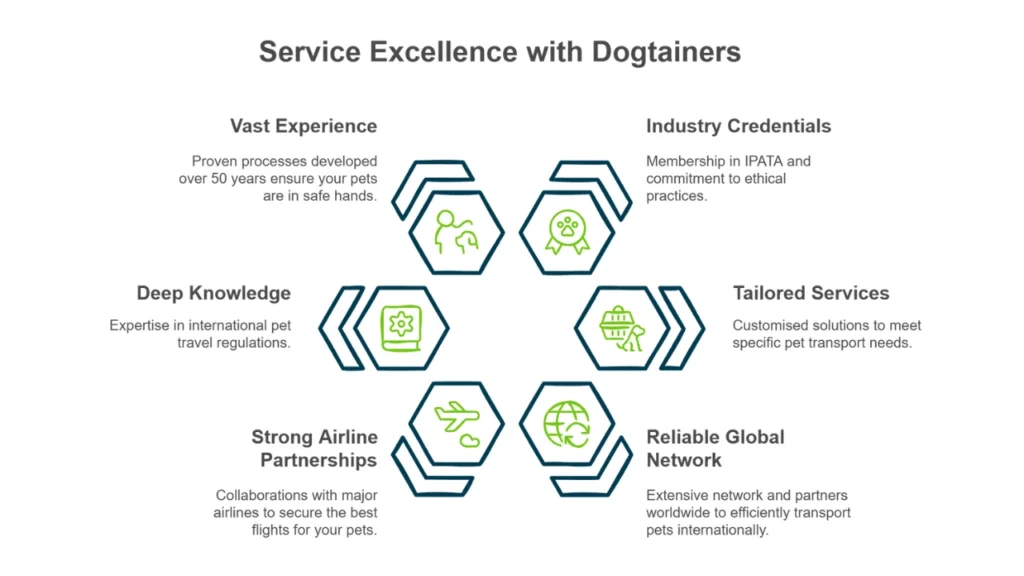
We’ve been perfecting stress-free pet travel for 50+ years.
Pet safety is our number one priority, and we strictly follow the protocols laid out by the International Air Transportation Association (IATA) in the Live Animals Regulations manual. As proud members of the International Pet and Animal Transportation Association (IPATA), we use our experience to make international pet travel safe and stress-free.
Get your quote today for international pet transport.

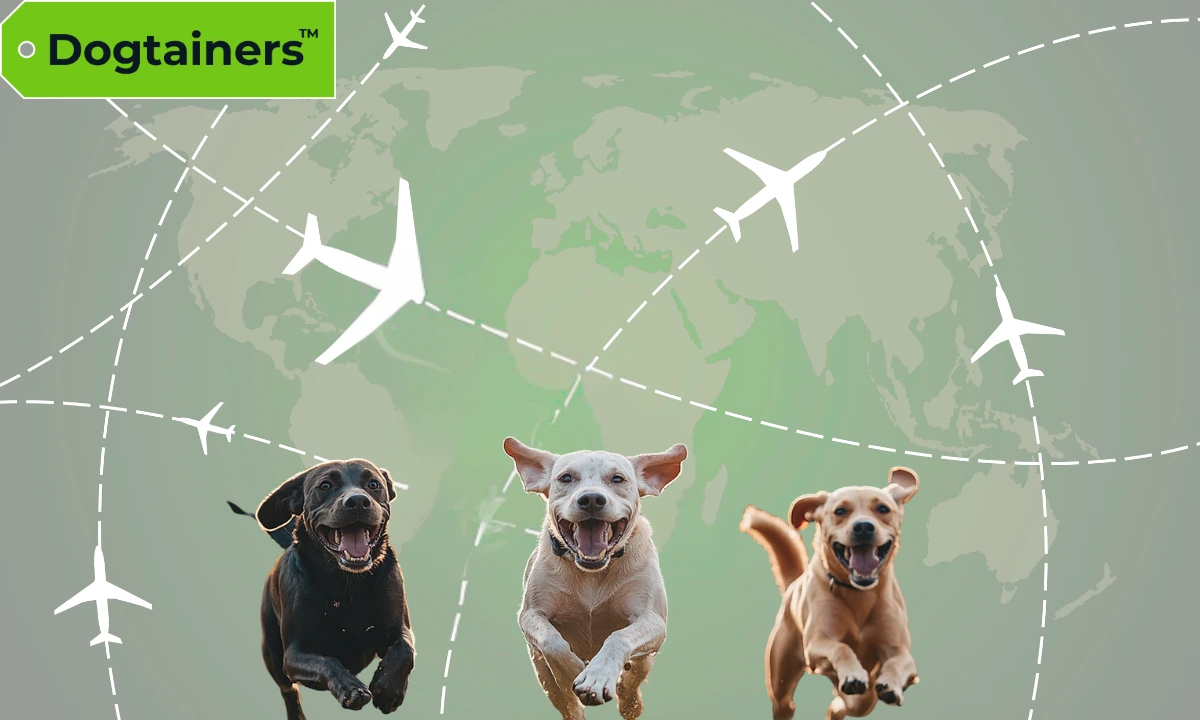

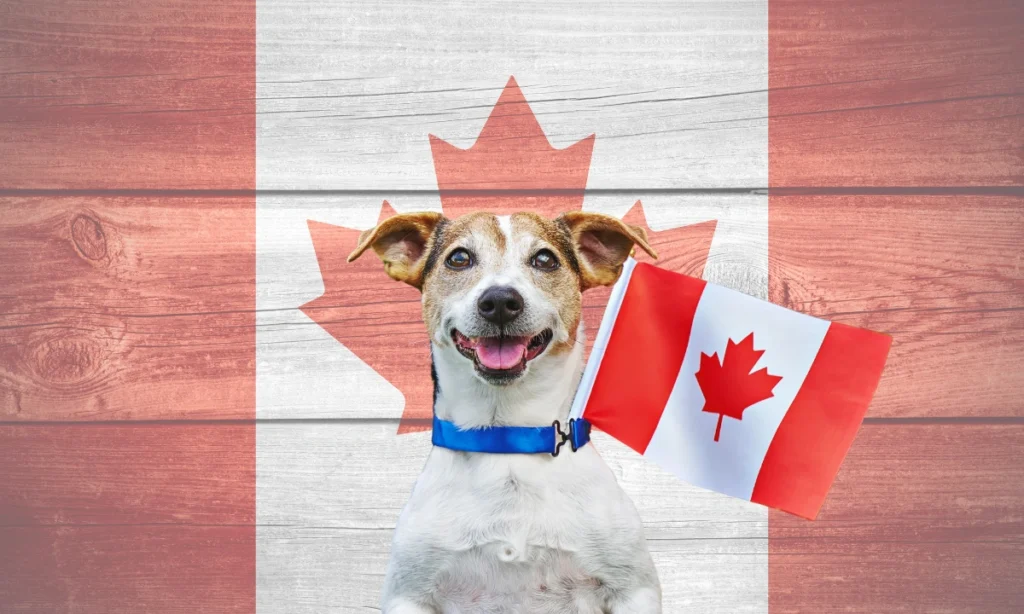
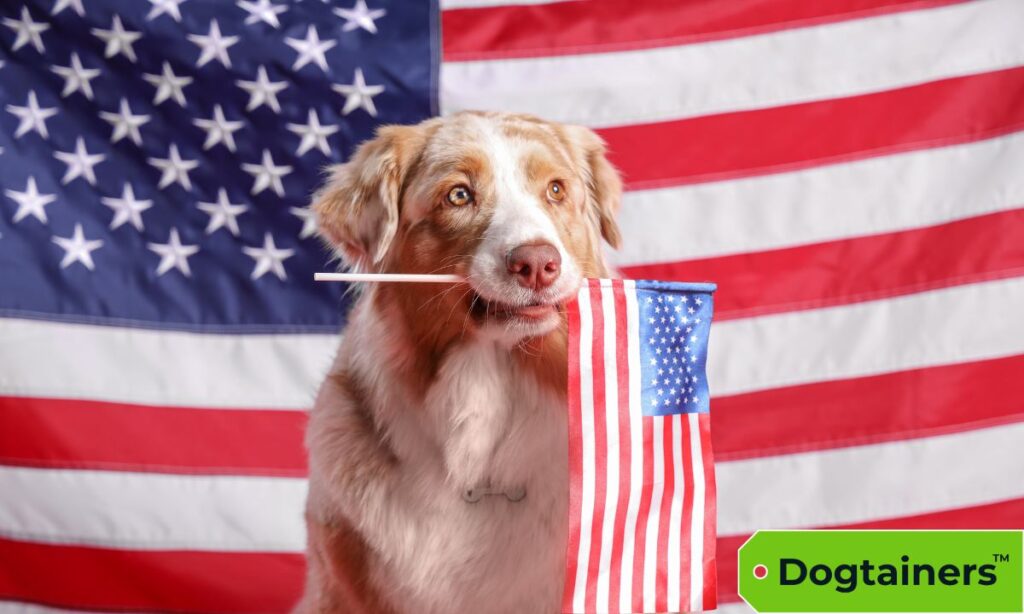
Share this article